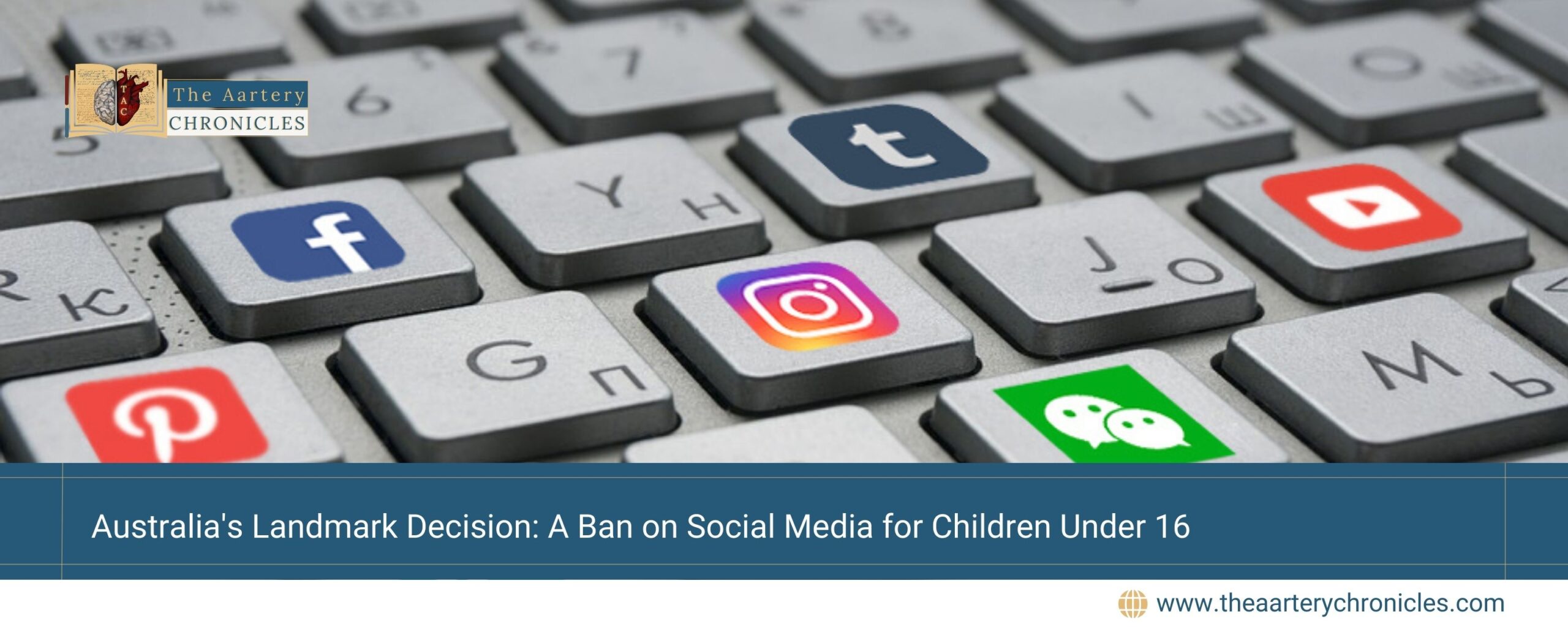

Australia's Landmark Decision: A Ban on Social Media for Children Under 16
Introduction
In a groundbreaking move, Australia has decided to ban children under the age of 16 from accessing social media platforms. This decision has drawn attention worldwide, as the adolescent population continues to grapple with the profound effects of social media on mental health. As the debate surrounding this controversial ban unfolds, it highlights the urgent need to address the implications of social media usage among teenagers
The Dark Side of Social Media: A Growing Concern
Social media’s impact on the mental health of teenagers is increasingly evident, as platforms like Instagram, Snapchat, and TikTok set unrealistic standards for beauty, success, and social acceptance. The culture of comparison perpetuated by these platforms has a detrimental effect on adolescents’ self-esteem. For instance, surveys indicate that a significant portion of teens are preoccupied with how they appear online, with 35% worrying about unattractive tags and 27% feeling anxious over their portrayal in images. This constant need for validation through likes and comments can lead to feelings of inadequacy and low self-worth.
Aditionally, research shows that the rise of social media has correlated with a decline in self-confidence among young girls. This stark reality is echoed in a U.K. survey, revealing only 33% of girls aged 14 to 15 felt good about themselves, a significant drop from previous years. The relentless nature of cyberbullying exacerbates these issues, as it extends beyond school hours and permeates teenagers’ lives around the clock.
Social Media's Role in Teen Anxiety and Cyberbullying
The relationship between social media and teen anxiety is complex. While it provides opportunities for connection, it simultaneously incubates feelings of anxiety and distress. Factors such as social comparison, cyberbullying, and the fear of missing out significantly contribute to heightened anxiety levels among adolescents. The prevalence of online harassment introduces a new dimension to peer victimization, making it difficult for victims to escape the psychological toll inflicted by their peers.
The anonymity of online interactions often emboldens cyberbullies, resulting in enduring emotional trauma for their victims. This continuous exposure to taunts and insults can induce severe anxiety, depression, and feelings of isolation, leading some victims to withdraw socially or, in extreme cases, contemplate self-harm.
The Peer Pressure Paradox
Moreover, social media has reshaped the dynamics of peer pressure among teenagers. The curated reality presented on platforms like TikTok and Instagram often makes adolescence a competition for likes and followers. This unending pressure can lead to risky behaviors and a decline in mental health, as teens strive to conform to unrealistic standards.
The Unfolding Misinformation Crisis
Misinformation is rampant on social media, further complicating the mental health landscape for teenagers. The potential dangers associated with self-diagnosis and exposure to harmful content can exacerbate existing mental health issues. The prevalence of misleading information can lead young users down a path of unnecessary anxiety and self-doubt.
The Call for a Digital Detox
In light of these alarming trends, a social media detox may serve as a practical solution to alleviate some of the psychological burdens faced by teenagers. Taking a break from social media can improve mental health, enhance productivity, and foster deeper connections in the real world. Encouraging young people to engage in offline activities can be a vital step towards re-establishing a sense of self-worth and fostering resilience.
Conclusion: A Necessary Step Forward
Australia’s decision to prohibit social media access for children under 16 is a significant step towards addressing the growing mental health crisis among adolescents influenced by digital culture. While the ban may spark debates about censorship and personal freedom, it is imperative to prioritize the mental well-being of young individuals in this digital age. By focusing on education, emotional intelligence, and informed digital literacy, society can equip teenagers with the tools to navigate the challenges posed by social media while protecting their mental health. Ultimately, this landmark decision may pave the way for a healthier generation that can thrive amidst the complexities of modern technology.
Source: Inputs from various media Sources









